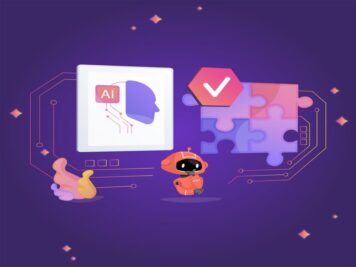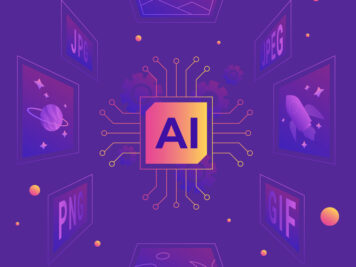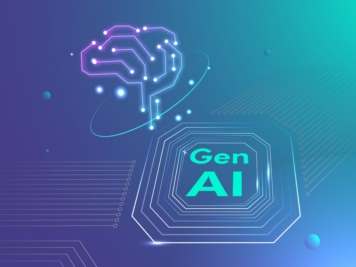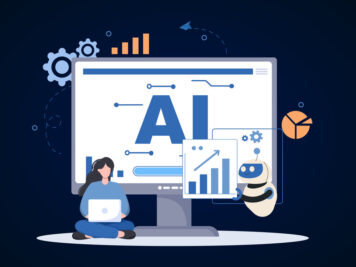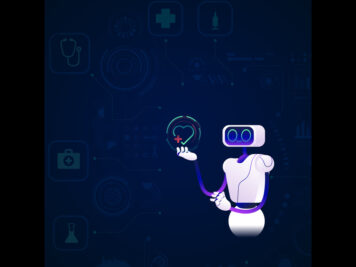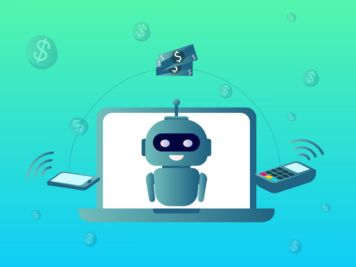There’s no doubt that ChatGPT is the flag-bearer when it comes to reviewing trendsetting generative AI tools. But it experienced numerous hiccups in its first few months, leading people to create memes. Tech pundits criticized ChatGPT, labeling it dumber than anything imaginable. Surprisingly, during the same period, it attracted over 100 million users. Its natural-language prompt proved to be a game-changer, solidifying its position as the go-to GenAI tool for decision-makers who value its ability to innovate, customize, and accelerate business processes.
Since November 2022, a deluge of GenAI tools has been upending the existing systems. This is mostly because artificial intelligence technology can produce content like text, graphics, audio, video, and synthetic data at the drop of a hat.
GenAI facilitates the creation of sophisticated AI solutions that transcend traditional boundaries and enable more nuanced interactions between machines and users, driving innovation across industries. Its significance lies in its advanced capabilities like natural language processing (NLP), deep learning, and neural networks, which can be quickly assessed for their potential in businesses.
Understanding Generative AI
Generative artificial intelligence (AI) refers to algorithms capable of creating new content by generating data samples similar to the training set. These models learn patterns, structures, and features from the given data to deliver audio, images, text, code, simulations, and videos.
GenAI’s techniques are ever-evolving. AI foundation models have the most significant impact as they are trained on unlabeled data that can be utilized for various tasks. The result may require some fine-tuning later. Essentially, these models are prediction algorithms built on complex math and enormous computing power.
There are some features that set GenAI apart from traditional AI:
- Content Generation:
While traditional AI mainly focuses on analysis and classification, GenAI creates new content such as text, code, images, videos, and music. It can learn from its inputs and perform creative tasks like writing creative content, generating code, or composing music.
- Adaptability and Learning:
GenAI can mimic human learning and adapt and learn from new data in real-time. This dynamic learning process makes it suitable for handling novel situations and improves its performance over time.
- Human-like Interaction:
Traditional AI responds formulaically, whereas GenAI can generate more natural and human-like outputs. By using NLP, GenAI can analyze the context and nuances of human language, ensuring more engaging and interactive experiences.
- Challenges in Testing:
GenAI’s ability to produce diverse and subjective outputs poses unique challenges in testing and evaluation. Unlike traditional software with definitive outputs, GenAI systems require novel approaches to assess their quality, effectiveness, and potential biases.
The Impact on Industries
The first glimpse of Sora from OpenAI has once again shaken things up among the developer and designer fraternities, much like its predecessor, ChatGPT. It has the potential to transform industries such as marketing and adtech. GenAI technologies leverage advanced algorithms to autonomously produce data, spanning from content creation and language generation to image synthesis and code development. Depending on the use case, they ensure faster product development, improved customer experience, and increased employee productivity.
GenAI’s impact on customer service is already colossal. Gartner predicts that by 2026, bots powered by conversational AI could reduce labor costs by $80bn. Models like ChatGPT and Copilot are also learning coding from Open-Source code to evolve as virtual companions for software developers. These can save code development time by up to 40%.
There are huge immediate revenue opportunities for value creation in industries like pharmaceuticals, banking, and adtech. GenAI can also enhance efficiency and reduce operation costs in retail, corporate banking, and insurance.
In the healthcare sector, it can enhance patient care, personalized treatment plans, and accelerate medical research. The industry has already experienced successful Generative AI implementation of the technology in areas like medical chatbots, customized treatment plans, and simulations for serious health conditions. Its impact on the cost of drug discovery and its ability to increase the efficacy of drugs post-clinical trials have attracted many investors.
GenAI is currently generating a lot of excitement as it has completely disrupted traditional business operations. However, this excitement also has a downside—uncertainty and caution stemming from ethical concerns and accountability. 69% of the respondents in an EY study shared that they would like to learn more about the risks.
Ethical Considerations and Challenges
“Bias is an important, industrywide problem.”- Alex Beck (a spokeswoman for OpenAI)
GenAI models depend on the quality of inputs. Their biases reflect the biases in the inputs. Stephanie Dinkins argues that these biases usually result from various sociological constructs. “The biases are embedded deep in these systems, so it becomes ingrained and automatic.” Multiple cases of Generative AI models generating prejudiced results for colored people, in fact, support this argument.
- Data Bias
Racial, cultural, and gender discrimination in inputs constantly create issues. But these are just sub-categories. Data bias can be broadly divided into 3 types-
- Historical bias is the existing bias that creeps into the data.
- Representation bias is the way data scientists define and create a dataset.
- Measurement bias happens while choosing or collecting features or labels for predictive models
The modeling process can be biased as well.
- Evaluation bias happens during evaluation and iteration.
- Aggregation bias is a result of poor model construction where distinct categories are wrongly combined.
Calibrating model scores for each group to reduce overestimation or underestimation probabilities can help remove data biases. Simultaneously, regular evaluation of generative AI models is crucial to developing mitigation strategies and ensuring equitable outcomes.
- Transparency & accountability
Regulators now advocate for transparency and accountability to address issues related to bias and fairness in GenAI models. However, the current challenge lies in understanding the exact routes and reasons behind the AI’s decisions—the ‘black box conundrum.’ While the inputs and outputs of any GenAI model are clearly visible to users, what happens between them remains unknown.
This poses a significant threat to brands and organizations, raising questions of accountability. The lack of transparency makes it difficult to diagnose and rectify issues. Engineers are now spending more time developing Explainable AI or XAI. One way of understanding the process is to track the chain of thoughts and monitor how the output changes with the prompts and its context.
- Security
The other problem is IP protection. GenAI can assist in content creation in two ways: an author can collaborate with the technology to generate content, or GenAI can automatically generate content. These two approaches raise questions about ‘who the author is’ and ‘whether the content is original.’
Transparent data provenance can reduce the problem of IP ownership. Simultaneously, establishing clear guidelines for fair use and licensing of GenAI-generated content is essential.
Ethical considerations also pose many roadblocks for GenAI, making companies hesitate when bombarded with questions about adopting the technology.
- Misinformation and deep fakes
Recent political campaigns in many countries have already borne the brunt of misinformation campaigns. Deep fakes have emerged as one of the crucial tools for the perpetrators. The Center for Countering Digital Hate (CCDH) has recently conducted research that found that the volume of AI-generated disinformation pertaining to elections has been rising by around 130% per month on X in the past year.
Hate speech and extremist comments are flooding platforms like Facebook and TikTok due to insufficient moderation of content. The other problem is the speed at which these contents can be churned is way higher than the speed at which these can be taken down.
- Employment crisis
Various countries are imposing regulations on AI in workplaces to control the extent to which AI can be used. This aligns with the global concerns around job loss due to the introduction of AI. The OECD Employment Outlook in 2023 has predicted that due to the introduction of Midjourney, Gemini, ChatGPT, and other GenAI tools, 27% of people may lose their jobs.
- Environmental impact
The computational work of the GenAI models happens mostly in large computing data centers. Their carbon footprint is already quite alarming. In 2019, the University of Massachusetts, Amherst published an article, “Energy and policy considerations for deep learning in NLP,” where they mentioned that training a single AI model can emit up to 626,000 pounds of carbon dioxide equivalent. This footprint is growing with the rapid adoption of the technology.
At the same time, GenAI models require a lot of hardware, and the hardware replacement cycle is quite intensive. This leads to more e-waste.
Opportunities with GenAI
GenAI’s potential is huge, and it is also inspiring innovators to find alternatives to existing technological challenges. Workplaces are implementing regulations like GDPR and CCPA to ensure responsible collection, storage, and use of user data. There is also a growing demand for comprehensive liability frameworks to encourage responsible development. Industry-specific regulations are also being introduced to counter these challenges.
Quantized models, optimized architectures, distillation, and green prompt engineering are emerging methods to reduce GenAI’s environmental impact.
The fear around the lay-offs is quite real. However, a recent Forrester report has shown that the job cuts (1.5% or 2.4 million) due to GenAI in the US by 2030 will be much less than those influenced by GenAI (6.9% or 11.08 million). It means that people should learn more about how to leverage this new technology instead of fearing it.
Meaningful GenAI can impact the market more than just make it efficient. Its potential as a transformative technology is immense, as it can create, simulate, and understand complex data to run enterprise-level innovation. This could open up avenues for businesses.
- Better organizational operation
GenAI can transform how departments like marketing, customer support, legal, finance, and human resources function. The technology can enhance both customer and employee experience. Chatbots and NLP-powered CRM tools are reducing the workload of people involved in human resources and customer support, freeing up time for employees to devise better strategies and innovations.
Content summarization and creation are also broadening the impact of departments like marketing, legal, and finance.
- Improved products
The traditional product development process involves multiple iterations. With GenAI, product engineers can now develop design alternatives, analyze feedback, and understand trends to reduce development time. These tools will also reduce the production cost to a great extent.
- Personalized experience
Businesses often struggle to bring in new customers. Small businesses often find this as their biggest roadblock. They can foster better connections with new clients by using audience-specific text triggers. With GenAI, they can automate the process of sending customer-specific emails with appropriate visuals to increase engagement. [AS1]
Leveraging conversational AI within the RAG pipeline using custom client datasets can also be useful for organizations. It presents numerous opportunities for organizations to enhance customer engagement, optimize revenue generation, improve operational efficiency, and mitigate risks, ultimately driving business success in a competitive market landscape.
- Better engagement with video content
Video content often has a higher impact than other forms due to its acceptance among users and the influence of social media. But churning videos frequently is difficult as developing one is time-consuming. GenAI can simplify the process of generating videos for regular correspondence, sales pitches, and marketing activities.
Recent developments in video content generation, such as content summarization, chunking, and content generation using prompts, have already started penetrating industries. Video content summarization can simplify editing in the entertainment industry, where highlights matter. Video generation can also help marketing and sales customize their pitches according to users and brands.
- Increase in image quality and its impact
Adobe’s recent extensions for image editing tools have already attracted many users due to their ability to curtail editing time and deliver previously unimaginable outputs. And it is no longer just limited to editing. Users can generate images using prompts that agencies are now using to generate portfolio shots for models.
Brands can use similar tools to generate campaigns for their target audience. In fact, the potential of such practices further increases with the possibility of transferring image styles. Interior designers can use these tools to offer real-time options to customers, enhancing the interactive experience.
- Voice cloning
The entertainment industry stands to benefit from audio cloning, reducing the need for an artist to be available to produce the desired voice. Voice cloning can also reduce production costs. At the same time, it can help create records, bridge voice gaps for commercials or movies, develop instructor voices for support groups, teach students in the education industry, and in many other ways.
- Text summarization
Leveraging advanced deep learning techniques, GenAI can analyze and comprehend the meaning of complex texts, extracting key information while preserving context and coherence. This technology holds immense potential across various domains, from aiding researchers in digesting vast amounts of literature to enabling news aggregation platforms to deliver succinct summaries of breaking stories. Its impact in the legal sector can be substantial as it can help people decipher long legal documents quickly.
With GenAI-powered text summarization, users can efficiently glean insights from large volumes of textual data, streamlining information consumption and decision-making processes.
- Text-to-speech & speech-to-text
GenAI presents groundbreaking opportunities in both text-to-speech (TTS) and speech-to-text (STT) applications, revolutionizing how we interact with audio content. GenAI’s advanced natural language processing capabilities enable the synthesis of human-like speech from written text, offering unprecedented clarity and expressiveness. This technology has vast implications across industries, from enhancing accessibility for visually impaired individuals to personalizing virtual assistants and interactive voice response systems.
Conversely, in STT, GenAI facilitates accurate and efficient conversion of spoken language into written text, driving innovation in voice recognition and transcription services. By leveraging deep learning algorithms, GenAI can decipher diverse accents, dialects, and speech patterns with remarkable accuracy, making it invaluable for applications such as dictation software, automated transcription services, and real-time language translation.
Things to consider before adopting GenAI
Going by the recent trends and predictions, integrating GenAI is a big leap forward for any business irrespective of its size. But it can also be disastrous if it is not done right since it has the potential to widen up the existing gaps. Here are a few things that businesses should consider before they adopt the technology.
- Organization’s goal
Incorporating GenAI is a resource-intensive process. If the organization’s goals are clear-cut, then adopting GenAI tools accordingly becomes easier. The tools can then streamline the operational process and make the outcomes more effective. With clear goals, you can set key performance indicators for the tools and get better insights.
Answers to the following questions might help you decide-
- How is the tool aligned with the goals of my organization?
- What do I want to resolve with this tool?
- Will I get any competitive edge?
- Scalability and flexibility
Once you are clear about your organizational goals, you should evaluate your readiness for the tool. The tool should also match your existing infrastructure; only then will you be able to scale. If not, then you will end up spending more on fixing things later and struggling with operational inefficiencies and wasted resources.
At the same time, you should also assess the tool against your strategies to understand how fit it is for your future developments. You can seek answers for
- Is the tool flexible enough to match my existing setup?
- Do I have the resources to manage this tool?
- Are there APIs and standard protocols supported to facilitate seamless integration with third-party services and tools?
- What infrastructure requirements are necessary to support the scalability goals of the GenAI system?
- Is the infrastructure cloud-native, allowing for seamless scaling and provisioning of resources as needed?
- Are there considerations for deploying the GenAI system across multiple geographical regions to improve performance and reliability?
- How is data managed and distributed across the GenAI system, especially when dealing with large datasets?
- Are there mechanisms for partitioning and sharding data to facilitate parallel processing and improve scalability?
- What strategies are in place for data replication and synchronization to ensure data consistency and availability as the system scales?
- Interdisciplinary collaboration
The existing setup also demands interdisciplinary collaborations.
- Do I have the platform to involve multiple departments and streamline the process?
- Will they get clarity about the process?
- Cost-benefit analysis
It is crucial to understand the impact of the GenAI tool by simulating potential cost and value realization. This can be done based on three factors: quick wins (within short timeframes), differentiators (medium timeframe), and transformational initiatives (long-term). You should have answers to the following questions
- What are my quick win priorities based on potential impact, cost and complexity?
- Will this help in my incremental productivity?
- Will it help me with improving specific business processes and reviewing potential incremental costs?
- How am I going to capture both financial benefits and strategic outcomes?
- Do I have the resources to manage the long-term plans?
- Are the board members ready to tolerate risks?
- How will they weigh strategic, competitive and market-level impacts while making their investment decisions?
- Security:
With the recent news of the development of an AI virus that can target GenAI models and prompt injection cases affecting LLMs, security is going to be one big concern. The following questions can help you devise your GenAI strategy better.
- How will sensitive data be stored, transmitted, and processed within the GenAI system?
- What encryption methods will be employed to protect data both at rest and in transit?
- How will data access be authenticated and restricted to authorized personnel only?
- What measures are in place to prevent unauthorized access or malicious attacks?
- What regulatory requirements and industry standards (e.g., GDPR, HIPAA) must be adhered to when implementing GenAI? How they are going to be followed?
- What measures are in place to detect and respond to security threats or anomalies in real-time?
- Is there a proactive monitoring system to identify potential vulnerabilities and security breaches?
- How will security incidents be reported, investigated, and remediated?
- How will security be maintained when integrating with third-party services or APIs?
- Are there security assessments conducted for third-party components or services used within the GenAI system?
- What plans are in place to ensure business continuity in the event of a security breach or system failure?
- Is there a robust disaster recovery strategy to recover data and restore operations in a timely manner?
Future Trends and Predictions
In B2C contexts, conditioned large language models (LLMs) may see increased adoption for improving web navigation or serving as code development assistants. The demand for transparency can also trigger an increase in the use of open-source LLMs. Decision-makers will drive demand for improved customization, cost-effectiveness, and greater control over data and AI operations.
A McKinsey report revealed that based on the 63 use cases they analyzed, GenAI could add $2.6 trillion to $4.4 trillion annually. AI could also benefit significantly from this market impact. Customer operations, R&D, marketing and sales, and software engineering—these four sectors are going to benefit the most.
GenAI has given artificial intelligence an unprecedented boost. Although matching human-level performance remains a distant reality, GenAI has shortened the path. Understanding the potential use cases and their value would be a game-changer, as this knowledge will facilitate faster and more effective adoption of GenAI. Additionally, it will ease the integration of automation in fields such as education, law, and the arts.
In marketing and sales, people will adopt it more to drive lead generation and marketing optimization through personalized outreach. The technology will drastically change software engineering, with the potential to optimize existing code and reduce the time spent creating new ones. In fact, some analysts predict that it can improve developers’ lives by eliminating repetitive tasks.
Conclusion
In conclusion, GenAI’s rapid evolution promises transformative innovation across industries. While it presents significant economic opportunities, it also poses ethical and security challenges. Strategic adoption, guided by clear goals, scalability, interdisciplinary collaboration, cost-benefit analysis, and robust security measures, is essential. With responsible deployment, GenAI has the potential to drive sustainable growth and competitive advantage, shaping a brighter future for businesses and society.


